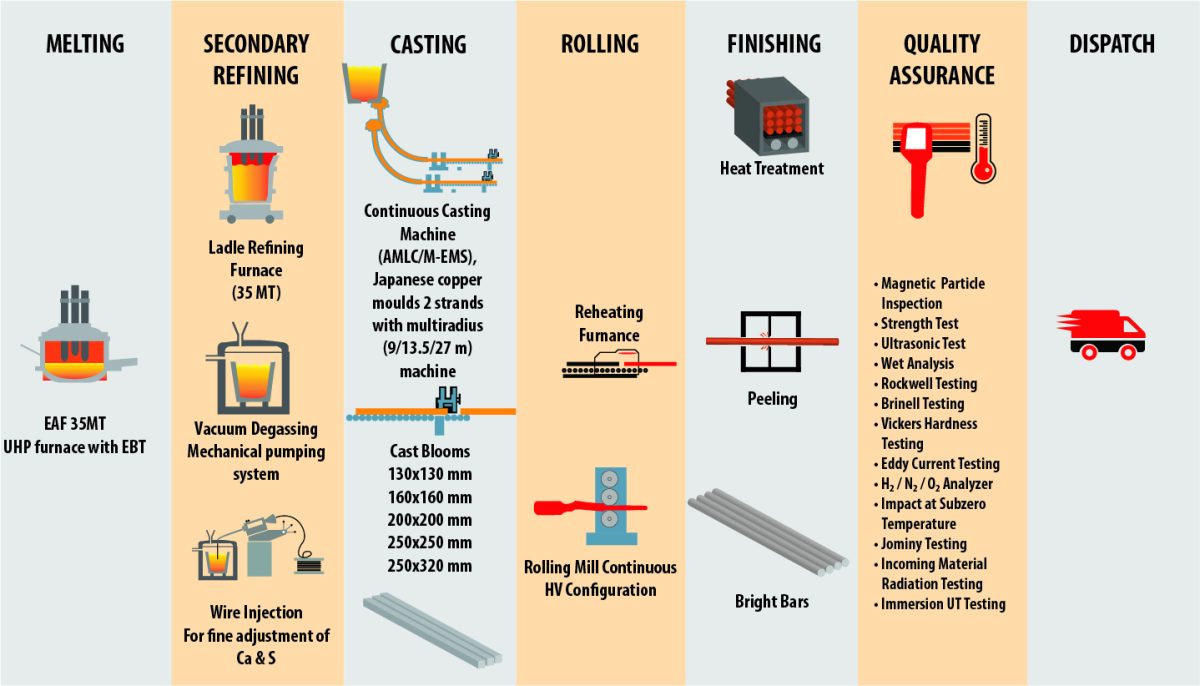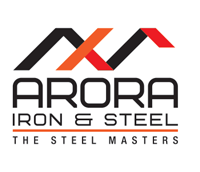The Process
From Scrap to Refined Metal:
The Journey of Steel Manufacturing

The process of steelmaking involves several key phases that contribute to the creation of high-quality steel.
- Melting: In this phase, steel is produced from scrap using Electric Arc Furnaces (EAF). The EAF melts the scrap, transforming it into liquid steel, which serves as the foundation for further processing. Steelmaking using scrap helps us reduce CO2 emissions.
- Secondary Refining: The liquid steel undergoes secondary refining in a Ladle Refining Furnace (35 MT). This stage involves processes such as Vacuum Degassing, Mechanical Pumping System, and Wire Injection for precise adjustment of elements like calcium and sulfur.
- Casting: The refined steel is then cast into desired shapes using a Continuous Casting Machine (AMLC/M-EMS) with Japanese copper molds. This machine allows for multi-radius casting, resulting in high-quality steel products.
- Rolling: The cast steel undergoes rolling, where it is shaped and reduced in thickness through a series of rolling mills, resulting in desired dimensions and profiles.
- Finishing: After rolling, the steel goes through various finishing processes, including heat treatment, surface treatment, and surface inspection, to enhance its properties and meet specific customer requirements.
- Quality Control: Stringent quality control measures are implemented to ensure the integrity and reliability of the steel. This involves a range of tests, such as Magnetic Particle Inspection, Ultrasonic Testing, Wet Analysis, Hardness Testing, Impact Testing, and more.
- Dispatch: Once the steel passes quality control, it is prepared for dispatch, carefully packaged, and delivered to customers, ready to be utilized in various industries.
Throughout these phases, the steelmaking process emphasizes precision, advanced technology, and adherence to strict quality standards to produce steel products of exceptional quality and performance.

